
FACULTY OF COMMUNICATION
Department of Cinema and Digital Media
CDM 340 | Course Introduction and Application Information
| Course Name |
Hollywood Cinema
|
|
Code
|
Semester
|
Theory
(hour/week) |
Application/Lab
(hour/week) |
Local Credits
|
ECTS
|
|
CDM 340
|
Fall/Spring
|
3
|
0
|
3
|
4
|
| Prerequisites |
None
|
|||||
| Course Language |
English
|
|||||
| Course Type |
Service Course
|
|||||
| Course Level |
First Cycle
|
|||||
| Mode of Delivery | Online | |||||
| Teaching Methods and Techniques of the Course | - | |||||
| Course Coordinator | - | |||||
| Course Lecturer(s) | ||||||
| Assistant(s) | - | |||||
| Course Objectives | This course aims to enable students to develop a general knowledge of Hollywood's production/distribution/exhibition networks. It identifies main themes and styles throughout Hollywood's history and discusses its patterns of authorship, star system, technology and genres. The course contextualizes Hollywood as a global system not only as a business but also as a system of meanings. |
| Learning Outcomes |
The students who succeeded in this course;
|
| Course Description | This course examines Hollywood in its economic, cultural and historical context. It studies its industrial dynamics (studio system, star system, etc.) in parallel with its narrative tendencies and stylistic devices. Students are expected to prepare papers analyzing Hollywood's systems in relation to its products and production processes. |
|
|
Core Courses | |
| Major Area Courses |
X
|
|
| Supportive Courses | ||
| Media and Management Skills Courses | ||
| Transferable Skill Courses |
WEEKLY SUBJECTS AND RELATED PREPARATION STUDIES
| Week | Subjects | Related Preparation |
| 1 | Introduction to the Course | |
| 2 | The Silent Period and the Sound Era - Screening: Modern Times (Charlie Chaplin, 1936) | Gomery, D, The Coming of Sound: A History. New York & London: Routledge, 1980. 87-115 |
| 3 | Genres I: Melodrama - Screening: All About Eve (Joseph L. Mankiewicz, 1950) | Neale, S, Genre and Hollywood. London & New York: Routledge, 2000. 179-205. |
| 4 | Genres II: Film Noir - Screening: Mildred Pierce (Michael Curtiz, 1945) | Naremore, J. (2008). More than night: Film noir in its contexts. University of California Press. 167-220. |
| 5 | Genres III: Psycho-Biddy - Screening: What Ever Happened To Baby Jane? (Robert Aldrich, 1962) | R. M. Hodgens, What Ever Happened to Baby Jane? Film Quarterly, Vol. 16, No. 3 (Spring, 1963), pp. 60-61 |
| 6 | The Production Code and Studios - Screening: Feud (Ryan Murphy, 2017) | Bordwell, D., Staiger, J., & Thompson, K, The classical Hollywood cinema: Film style and mode of production to1960. Columbia University Press, 1985. 1-70. |
| 7 | Genres IV: Western - Screening: The Quick and the Dead (Sam Raimi, 1995) | Bönke, M. (2001) “Myth and law in the films of John Ford” Journal of Law and Society vol. 28 (1), 47-63. |
| 8 | New Hollywood - Screening: Who’s Afraid of Virginia Woolf (Mike Nichols, 1966) - First response paper due date | Tzioumakis, Y. (2006). The New Hollywood and the Independent Hollywood in American Independent Cinema: An Introduction (Rutgers, pp. 169-191. |
| 9 | Authorship - Screening: Kill Bill Vol. 1 (Quentin Tarantino, 2003) | Spadoni, R. (1995). Geniuses of the systems: Authorship and evidence in classical Hollywood cinema. Film History, 7(4), 362-385. |
| 10 | Contemporary Hollywood - Screening: Scream (Wes Craven, 1996) | Neale, S., & Smith, M. (Eds.). (2013). Contemporary Hollywood Cinema. London and New York: Routledge. 280-294 |
| 11 | Hollywood, Internet and Found Footage - Screening: The Taking of Deborah Logan (Adam Robitel, 2014) - Second Response Paper Due date | Bordwell, D. (2002). Intensified Continuity: Visual Style in Contemporary American Film, Film Quarterly. 55 (3), pp. 16-28. |
| 12 | Stardom - Screening: Hunger Games (Gary Ross, 2012) | Mulvey, L. (1989). Visual pleasure and narrative cinema. In Visual and other pleasures. Palgrave Macmillan UK, pp. 14-26. |
| 13 | Pixar, Disney and the Digital Era - Screening: Maleficent (Robert Stromberg, 2014) | Watts, S. (1995). Walt Disney: Art and politics in the American century. The Journal of American History. 82 (1), pp. 84-110. - Currah, A. (2007) “Hollywood, the Internet and the world: A geography of disruptive innovation” Industry and Innovation. 14 (4), pp. 359-384. |
| 14 | New Cinema of Attractions? Re-make and Reboot - Screening: Spiderman: Homecoming (Jon Watts, 2017) - Third response paper due date | Behlil, M. (2016). Hollywood is Everywhere: Global Directors in the Blockbuster Era. Amsterdam University Press. 97-111. |
| 15 | Review of the semester | |
| 16 | Review of the semester |
| Course Notes/Textbooks | |
| Suggested Readings/Materials |
EVALUATION SYSTEM
| Semester Activities | Number | Weigthing |
| Participation |
1
|
25
|
| Laboratory / Application | ||
| Field Work | ||
| Quizzes / Studio Critiques | ||
| Portfolio | ||
| Homework / Assignments |
3
|
75
|
| Presentation / Jury | ||
| Project | ||
| Seminar / Workshop | ||
| Oral Exams | ||
| Midterm | ||
| Final Exam | ||
| Total |
| Weighting of Semester Activities on the Final Grade |
4
|
100
|
| Weighting of End-of-Semester Activities on the Final Grade | ||
| Total |
ECTS / WORKLOAD TABLE
| Semester Activities | Number | Duration (Hours) | Workload |
|---|---|---|---|
| Theoretical Course Hours (Including exam week: 16 x total hours) |
16
|
3
|
48
|
| Laboratory / Application Hours (Including exam week: '.16.' x total hours) |
16
|
0
|
|
| Study Hours Out of Class |
0
|
||
| Field Work |
0
|
||
| Quizzes / Studio Critiques |
0
|
||
| Portfolio |
0
|
||
| Homework / Assignments |
3
|
24
|
72
|
| Presentation / Jury |
0
|
||
| Project |
0
|
||
| Seminar / Workshop |
0
|
||
| Oral Exam |
0
|
||
| Midterms |
0
|
||
| Final Exam |
0
|
||
| Total |
120
|
COURSE LEARNING OUTCOMES AND PROGRAM QUALIFICATIONS RELATIONSHIP
|
#
|
Program Competencies/Outcomes |
* Contribution Level
|
||||
|
1
|
2
|
3
|
4
|
5
|
||
| 1 | To be able to have fundamental knowledge about narrative forms in cinema, digital and interactive media, and the foundational concepts relevant to these forms. |
X | ||||
| 2 | To be able to create narratives based on creative and critical thinking skills, by using the forms and tools of expression specific to cinema and digital media arts. |
X | ||||
| 3 | To be able to use the technical equipment and software required for becoming a specialist/expert in cinema and digital media. |
X | ||||
| 4 | To be able to perform skills such as scriptwriting, production planning, use of the camera, sound recording, lighting and editing, at the basic level necessary for pre-production, production and post-production phases of an audio-visual work; and to perform at least one of them at an advanced level. |
X | ||||
| 5 | To be able to discuss how meaning is made in cinema and digital media; how economy, politics and culture affect regimes of representation; and how processes of production, consumption, distribution and meaning-making shape narratives. |
X | ||||
| 6 | To be able to perform the special technical and aesthetic skills at the basic level necessary to create digital media narratives in the fields of interactive film, video installation, experimental cinema and virtual reality. |
X | ||||
| 7 | To be able to critically analyze a film or digital media artwork from technical, intellectual and artistic perspectives. |
X | ||||
| 8 | To be able to participate in the production of a film or digital media artwork as a member or leader of a team, following the principles of work safety and norms of ethical behavior. |
X | ||||
| 9 | To be able to stay informed about global scientific, social, economic, cultural, political, institutional and industrial developments. |
X | ||||
| 10 | To be able to develop solutions to legal, scientific and professional problems surrounding the field of cinema and digital media. |
X | ||||
| 11 | To be able to use a foreign language to communicate with colleagues and collect data in the field of cinema and digital media. ("European Language Portfolio Global Scale", Level B1). |
X | ||||
| 12 | To be able to use a second foreign language at the medium level. |
|||||
| 13 | To be able to connect the knowledge accumulated throughout human history to the field of expertise. |
|||||
*1 Lowest, 2 Low, 3 Average, 4 High, 5 Highest
NEWS |ALL NEWS
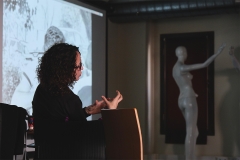
"Working with Found Footage" Workshop Organized with Zeyno Pekünlü
Artist, director, activist and academician Zeyno Pekünlü was the guest of CDM232: Digital Film Studio II.
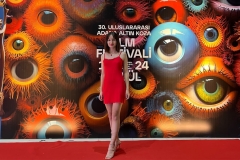
CDM senior year student Ecem has been selected to the Animation category at Adana Altın Koza Film Festival
CDM 4th-grade student Ecem Çörtle has been selected as a finalist in the National Student Films category of the 30th International Adana
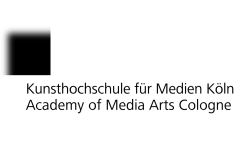
CDM graduate Eylül Berivan Kızılırmak has been accepted to the Cologne Academy of Media Arts
CDM graduate Eylül Berivan Kızılırmak has been accepted to the master's program at the Academy of Media Arts Cologne (Kunsthochschule für Medien Köln).
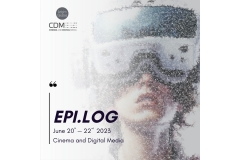
Traditionalistic CDM End of Year Exhibition EPI.LOG took place in FC Studios
Cinema and Digital Media End of Year Exhibition EPI.LOG 2023, organized as part of IUE Faculty of Communication Exhibition "FC-EX 2023", was
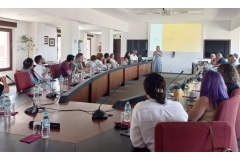
IUE Faculty of Communication Advisory Board members visited our Faculty and Studios on June 22, 2023
IUE Faculty of Communication Advisory Board members Andreas Treske, Ayşe Matay, Barbaros Görgü, Dilek Gappi, Elif Demirci İşleğen, Emine Uysal Berger, Murat
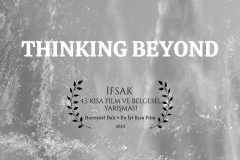
Ataberk awarded at the İFSAK 43rd National Short Film and Documentary Competition
Our third-year student, Ataberk Eyolcu, returned from the 43rd National Short Film and Documentary Competition of İFSAK (Istanbul Photography and Cinema Amateurs
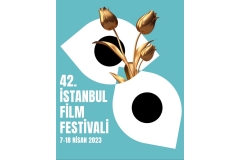
Our third-year CDM student Fikret Başar Kaya was at the 42nd Istanbul Film Festival
Our third year CDM student Fikret Başar Kaya participated as a Young Jury at the 42nd Istanbul Film Festival held on April
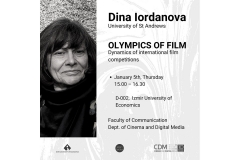
CDM hosted Dina Iordanova
Prof. Dina Iordanova gave a speech titled Olympics of Film: Dynamics of international film competitions on Thursday, January 5, 2023, in D002 at Izmir

